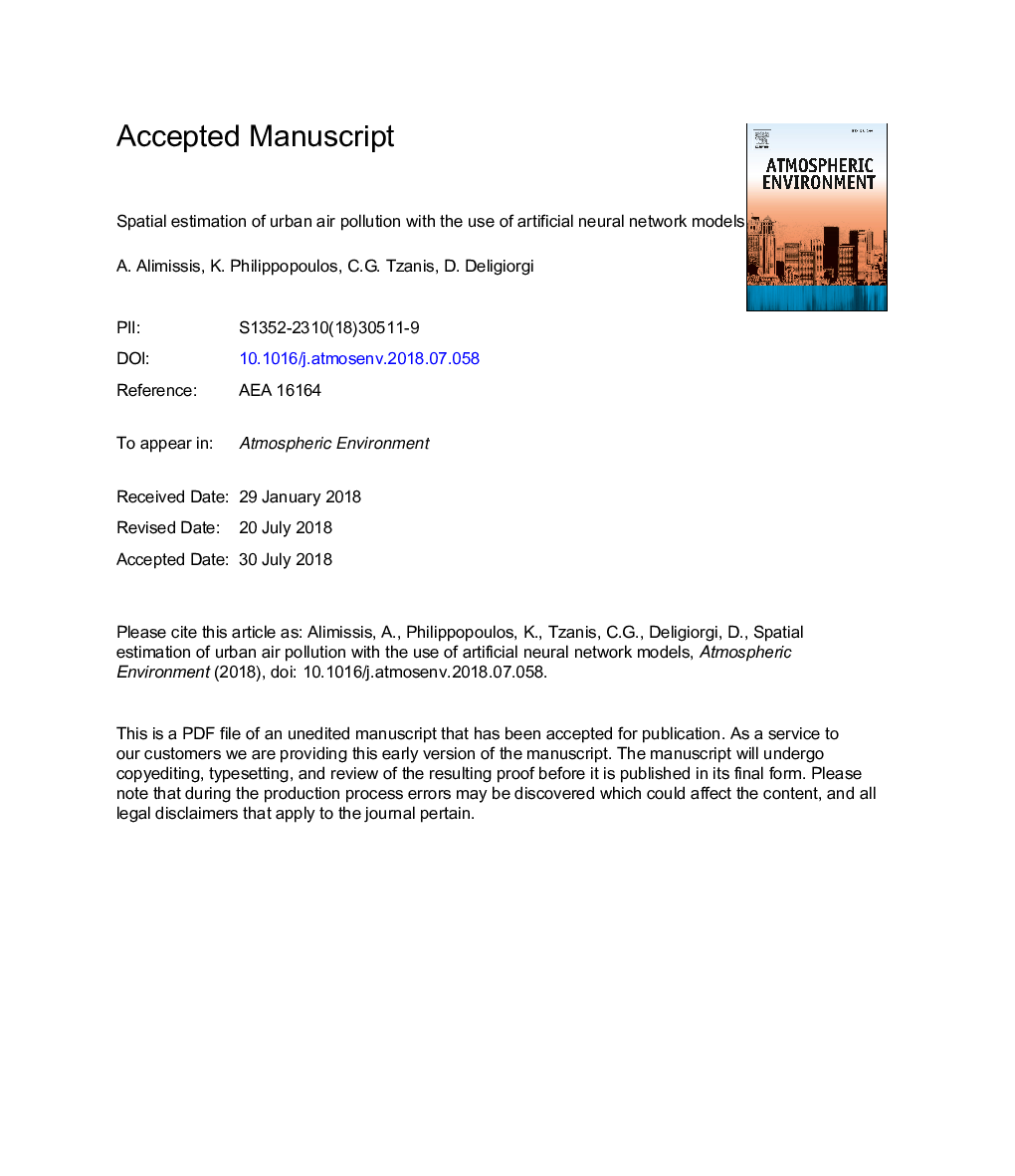| Article ID | Journal | Published Year | Pages | File Type |
|---|---|---|---|---|
| 8863397 | Atmospheric Environment | 2018 | 18 Pages |
Abstract
The deterioration of urban air quality is considered worldwide one of the primary environmental issues and scientific evidence associates the exposure to ambient air pollution with serious health effects. This fact highlights the importance of generating accurate fields of air pollution for quantifying present and future health related risks. Interpolation methods for point estimations in the field of air pollution modelling enable the estimation of pollutant concentrations in unmonitored locations. The main objective of this study is to evaluate two interpolation methodologies, Artificial Neural Networks and Multiple Linear Regression, using data from a real urban air quality monitoring network located at the greater area of metropolitan Athens in Greece. The results for five regulated air pollutants (Nitrogen dioxide, Nitrogen monoxide, Ozone, Carbon monoxide and Sulphur dioxide) are compared through the use of a set of correlation and difference statistical measures and residuals distribution. Artificial neural networks are found in most cases to be significantly superior, especially where the air quality network density is limited, leading to a decreased degree of spatial correlations among the monitoring sites.
Related Topics
Physical Sciences and Engineering
Earth and Planetary Sciences
Atmospheric Science
Authors
A. Alimissis, K. Philippopoulos, C.G. Tzanis, D. Deligiorgi,
